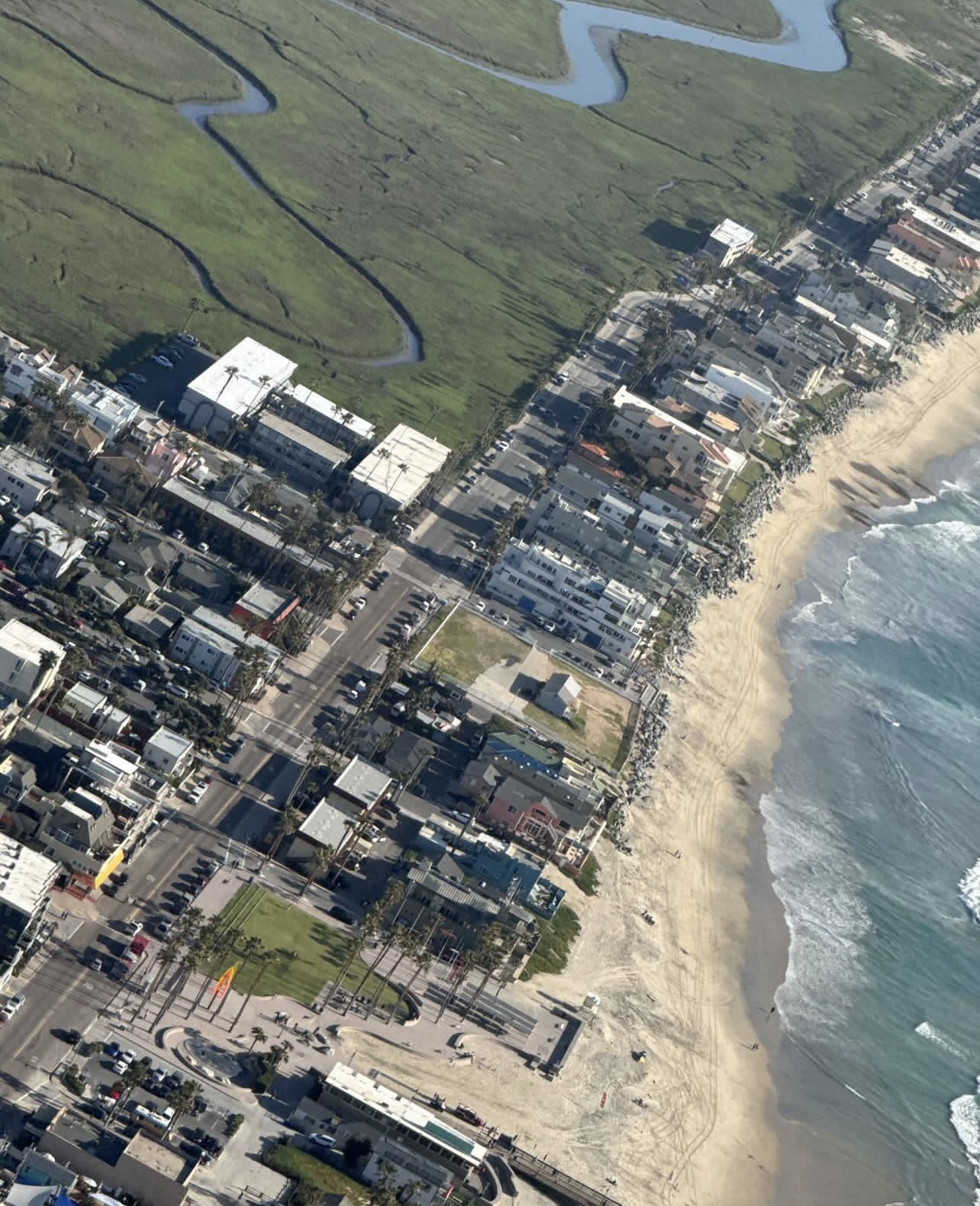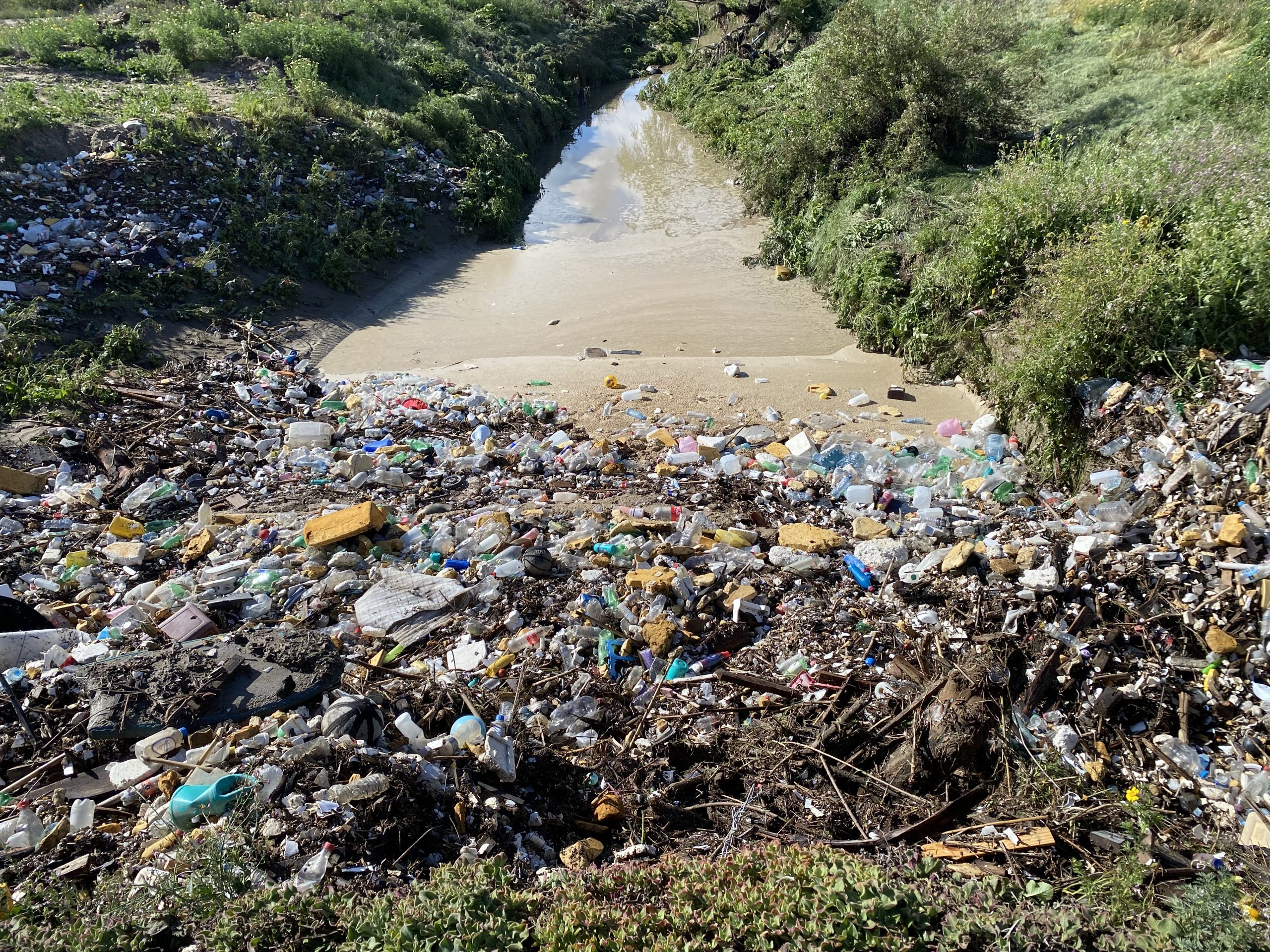Environmental Injustice
Environmental Justice is about treating all people the same and equally.
Environmental Injustice in South San Diego Bay leads to various environmental issues like air pollution, closed beaches, restricted access to public spaces, and land development impacting community well-being and economic prospects.
For citizens who call the South San Diego Bay home, Environmental Injustice is the primary cause of almost all environmental problems faced in our border community.
Environmental Injustice is the very reason the air stinks in Imperial Beach. Our government officials and NGO’s have implemented plans to build sewage ponds next to our homes in San Ysidro, 11 of miles beach have been closed, 14 miles of San Diego Bay is off limits, and access to our 3600 acres of public open space parks is now being taken away for mitigation.
This mitigation allows our public lands to be taken out of public recreational use and monetized so developers can justify plowing down pristine habitat elsewhere in the state.
Our communities have continuously felt the direct impact of environmental injustices practiced by the California Coastal Commission, San Diego Port District, NGO’s, State Wildlife, County and City Governments.
The result: lower quality of life for the people of the South San Diego Bay.
What is Environmental Injustice?
1960's Civil Rights Movement
In the 1960s, the civil rights movement highlighted disparities in infrastructure and development between rich and poor areas in Southern cities of the US, with Northern cities becoming wealthier areas receiving more investment and resources. This led to economic disparities, with poorer areas facing inadequate infrastructure and services despite contributing significantly to public taxes. The imbalance in public spending and economic opportunities created environmental injustices, with marginalized communities on the South side of San Diego bearing the brunt of neglect and pollution, while affluent areas on the North side flourished.
1960's Civil Rights Act
The Civil Rights Act of the 1960s in the USA prohibits discrimination based on race, color, or ethnicity by government entities. It ensures fair treatment and equal representation under the law.
Proving abuse of this act in court is challenging, especially in complex situations involving various organizations.
However, there is hope. The people who wrote the civil rights act, Supreme Court Judge Thurgood Marshall, wisely put in place one simple fool proof argument that can clear up all the clutter is: “IS IT SO.”
"IS IT SO"
The meaning of the term "IS IT SO" questions if local government actions and NGO influence create advantages for specific social groups in South San Diego Bay Communities. The analysis suggests discrimination through disproportionate spending, unequal representation, and biased infrastructure projects. When this ‘IS IT SO” analysis is done objectively there can be no question that the South San Diego Bay citizens are being discriminated against by their government, both by disproportional public spending and land use.
How do local San Diego Governments practice Environmental Injustice against the people of the South San Diego Bay?
Taxes NOT Supporting the People
The South Bay of San Diego serves as the world's largest border port of entry, with over 120,000 individuals crossing daily, surpassing the 25,000 at the SD Airport. This influx generates significant sales tax revenue for local governments, notably benefiting the City of San Diego. The City of Tijuana encompasses 2.6 million residents who frequently shop within close proximity to the border. In the South San Diego area, there are currently 7 Walmart stores, with more on the way. Despite these revenues, our local governments do not receive a proportionate share to enhance community services like schools, roads, and public parks in the South Bay. Do you think we are receiving a fair share of the taxes generated in our local area from our local governments?
Loss of Public Beach & Bay Access
In 2014, when the SDGE electrical plant was demolished, the County of San Diego had a 20-year plan named Otay River Bay Park. This plan aimed to create a public park with water access along that bay area, offering South Bay citizens a chance to regain their bay access. However, without public notice, this project was abandoned. The land was instead used for mitigation or entitlement credits for a project in North San Diego Bay, leading to the loss of public access to the J-Street beaches due to buffer zones.
As a resident of the South Bay, do you believe it is fair to trade access rights to our tidelands for developers' financial gain? Our rights to access the water and shoreline are fundamental privileges protected by the California Constitution. What are your thoughts on this matter?
Tijuana River Trash Dump
The Tijuana River Valley houses a historical trash disposal site utilized by the City of San Diego and the US Navy dating back to the 1920s. If this dump site were located in North County or any other part of the county, do you believe it would have remained uncleaned and unnoticed for two decades, right under the noses of environmentalists and public officials? Why have they chosen to overlook this environmental hazard and now seek to bury it?
Lack of Waterfront Development
The area south of the Coronado Bridge in San Diego Bay has enough space for four recreational parks like Mission Bay. However, from National City through Chula Vista, South San Diego, and Imperial Beach, there are no public beaches available. Is it equitable that the City of San Diego and Coronado have established seven white sandy beaches, constructed boat docks, waterfront restaurants, and invested millions of public funds in 10 projects to enhance the North San Diego Bay, without allocating a proportional amount to the South Bay? Access to the South Bay shoreline is provided by the Port of San Diego, yet it is being restricted without public input or awareness, while access is commercialized to non-governmental organizations. Do you believe this treatment is fair and impartial in accordance with the law?
900+ Days of Beach Closure
Following the significant spills and sewage releases from Mexico into the Tijuana River Valley in 2017, there have been no plans, whether short or long-term, to enhance the water quality off Imperial Beach. This issue is not recent; over the past 60 years, Imperial Beach has faced beach closures due to rain. However, in the last 18 years, both beach closures and pollution levels have notably risen. For over 900 days, the beaches in South Bay have remained closed. Is this fair?
Starving Beaches of Sand
Throughout the past three decades, State Wildlife and County Parks in the Tijuana River Valley have obstructed standard flood control maintenance practices. This has disrupted the natural yearly process of depositing 655,000 cubic yards of beach sand. Despite the State Law safeguarding the coastal sand supply, they have chosen not to enforce it. Instead of safeguarding residences, the City of Imperial Beach resorts to eminent domain or an insurance scheme to acquire private beachfront properties. Is it fair to consider it an environmental injustice when the law is applied to at least five other river systems in San Diego County to sustain sand feeding the coast, but not to the Imperial Beach Shorelines? Rather than restoring the sand supply as part of the Tijuana Valley Restoration Plan, local leaders opt to hire consultants from outside the area who overlook this critical natural process that shields our coastline. Initially depriving the beach of sand, they later attribute it to rising sea levels to justify seizing private properties. One must question if there is a discrepancy in how we are treated compared to other regions in the county. What do you think?






